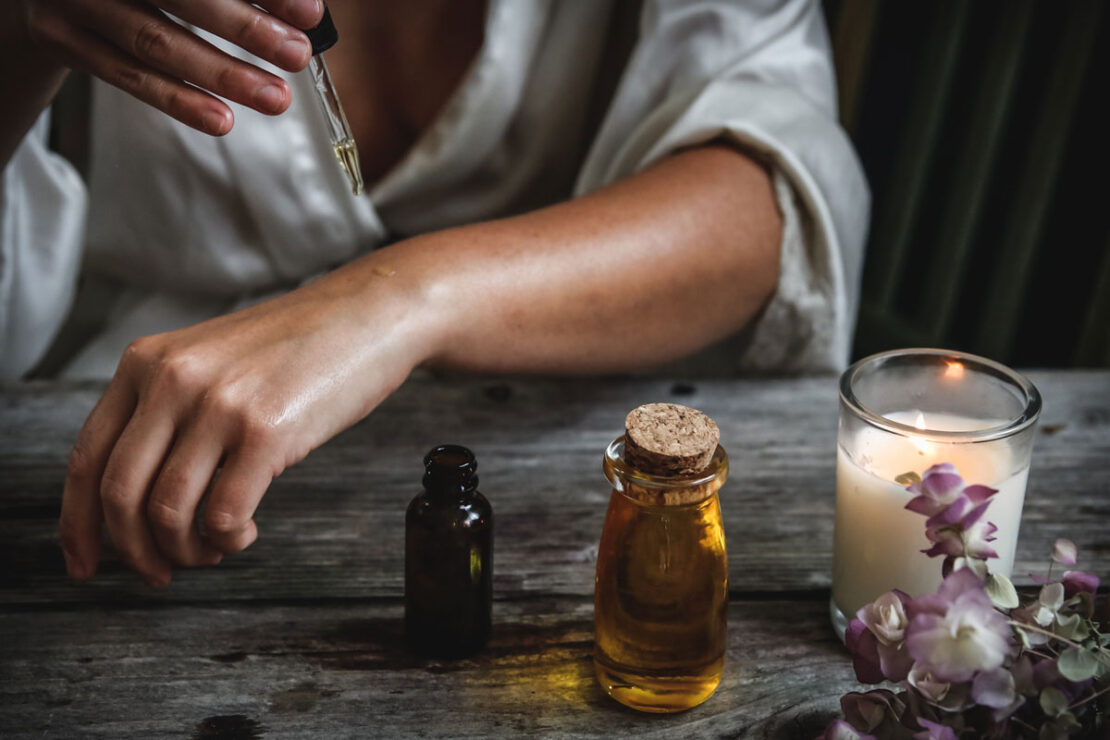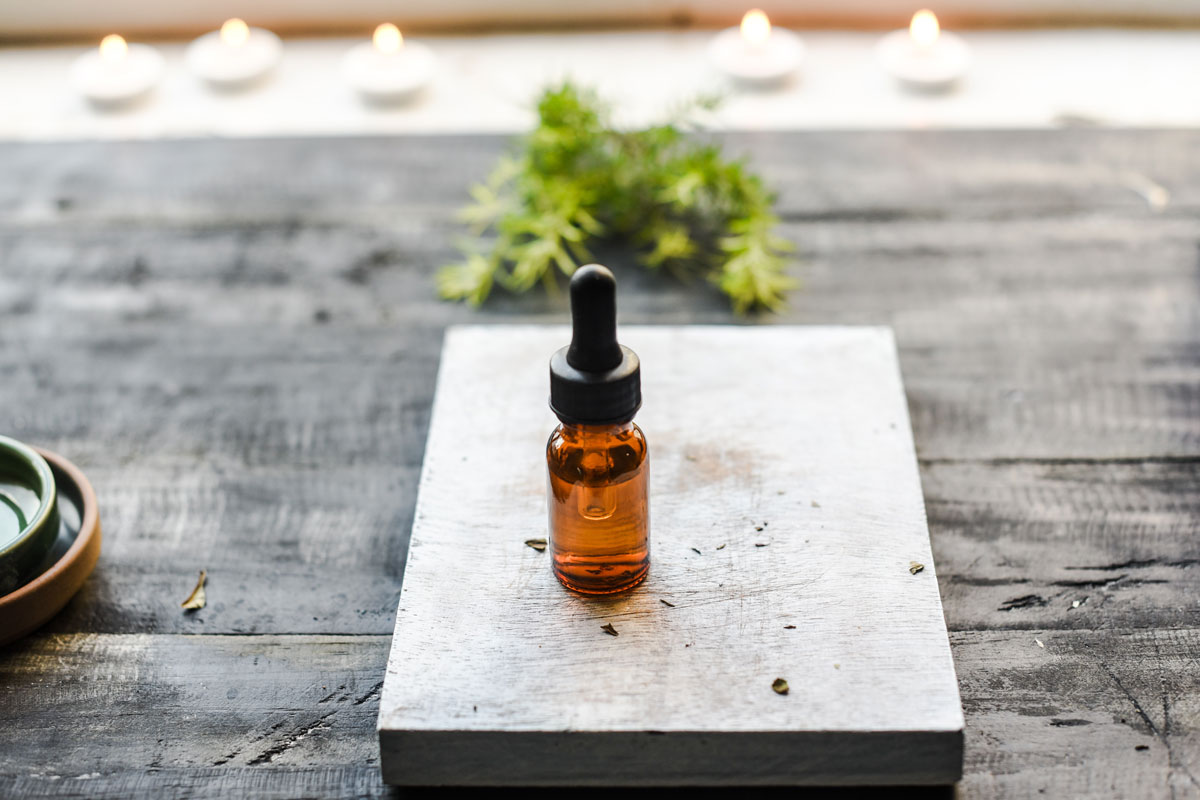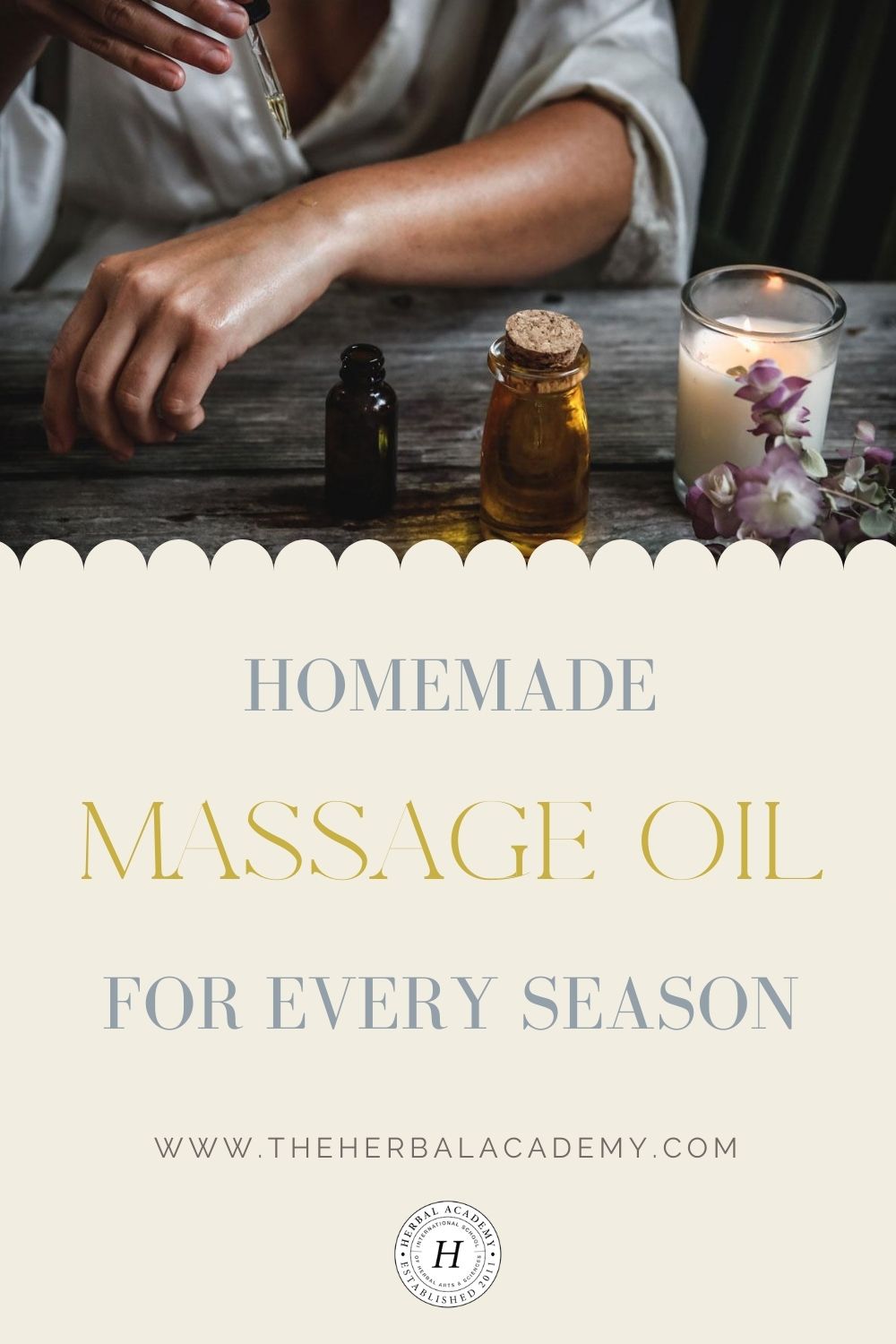
Homemade Massage Oil for Each Season
Massage oil, especially when infused with herbs, can be more than just a feel-good skin moisturizer. Ayurveda teaches that fat is closely connected to love, satisfaction, and protection (Svoboda, 1999). In addition to nourishing and nurturing the skin, using herbally infused homemade massage oils produces a grounding, supportive, and protective effect on the body and mind. Daily self-massage with oil, called abhyanga, is a wonderful practice for soothing vata dosha in particular but can be practiced with benefit by all types. The base oil and herbs can be adapted based upon your constitution and the season.
This article explains how to adapt your homemade massage oil so that it fits the season. Also, if you are familiar with your dosha, or constitutional qualities, you can use these recipes as inspiration to tailor your massage oil to fit your type. As you will see, the basic process for making an herbal massage oil is outlined, and I provide suggestions for herbs to select depending on the season.
Basic Homemade Massage Oil Instructions
Adapted from the California College of Ayurveda. Whether you are looking to make massage oil for winter, spring, summer, or fall, this is the basic process to follow for making a homemade massage oil. This process takes some time, care, and supervision. However, it is great for extracting both the water- and fat-soluble components from your chosen herbs. If you are short on time and looking for an alternative method, check out How to Make Alcohol-Intermediary Infused Oils. Either way, you will know that your homemade massage oil was made with love and care. Yield: 4 ounces.
Ingredients
1 ounce dried herb (Keep reading for seasonal recipes!)
6 ounces oil (See seasonal recipe links, below, for which oil to choose.)
16 ounces water
Directions: When Using Hard Parts of the Plant (bark, root)
- Place herbs and water together in a medium-sized saucepan.
- Bring mixture to a boil and then simmer until water is reduced by 50%.
- Proceed to “Adding the Oil,” below.
When Using Soft Parts of the Plant (flowers, leaves, and stems)
- Bring water to a boil and then remove from heat.
- Add the soft herb parts.
- Steep for 30-60 minutes, covered.
- Proceed to “Adding the Oil,” below.
When Using a Mixture of Hard and Soft Plant Parts
- Place the hard herb parts (roots, bark) and water together in a medium-sized saucepan.
- Bring mixture to a boil and then simmer until water is reduced by 50%.
- Remove mixture from heat. Add the soft parts (flowers, leaves, or stems) and let steep, covered, for 30-60 minutes.
- Proceed to “Adding the Oil,” below.
Adding the Oil
Now it’s time to turn your herbal decoction or infusion into an herbal oil!
- Combine decoction or infusion, herbs, and oil in a small- to medium-sized saucepan.
- Heat until the water and oil just start to bubble, then reduce heat to a low simmer.
- Stir occasionally and ensure that the herbs are not scalding or sticking to the bottom of the pan.
- Simmer until all water evaporates and only oil and herbs remain.
- Look for these signs to indicate that water has evaporated: only very small bubbles being produced. (Oil creates small bubbles, whereas water creates large bubbles.) Hold a dry glass or glass plate over the pot. If you see any condensation, that means there is still water left. Lastly, if you think the mixture is ready or close to it, go ahead and strain out the herbs. You should be left with 4-6 ounces of liquid oil. If you end up with more, simmer a bit longer.
To Use:
Store in a capped glass jar or bottle out of direct sunlight and apply to skin daily—or as frequently as you like!
For specific herbal recommendations dashed on your dosha or the time of year, see the recipes, below.

Homemade Massage Oil Recipes
Vata Massage Oil Recipe (Fall and Early Winter)
Pitta Massage Oil Recipe (Summer and Late Spring)
Kapha Massage Oil Recipe (Late Winter and Early Spring)
In Closing,
Though oil massage is especially useful for vata types and during the vata time of year (late fall and early winter), most all of us could use a little extra care in the form of massage oil at any time of year. Homemade massage oils also make a wonderfully thoughtful gift. Now that you have a template and some herbal suggestions to work with, consider tailoring your homemade massage oils to the season! Go with lighter, cooler choices in the summer, warm and heavy options in the fall and early winter, and a warm and invigorating formula in the late winter and spring.

REFERENCES
Making Herbal Medicines Workshop. California College of Ayurveda. Nevada City, CA. August, 2016.
O’Donnell, K. (2015). The everyday ayurveda cookbook: a seasonal guide to eating and living well. Boulder, CO: Shambala.
Svoboda, R. (1999). Prakriti: Your ayurvedic constitution. Delhi, India: Motilal Banarsidass Publishers.








